3DWarehouse
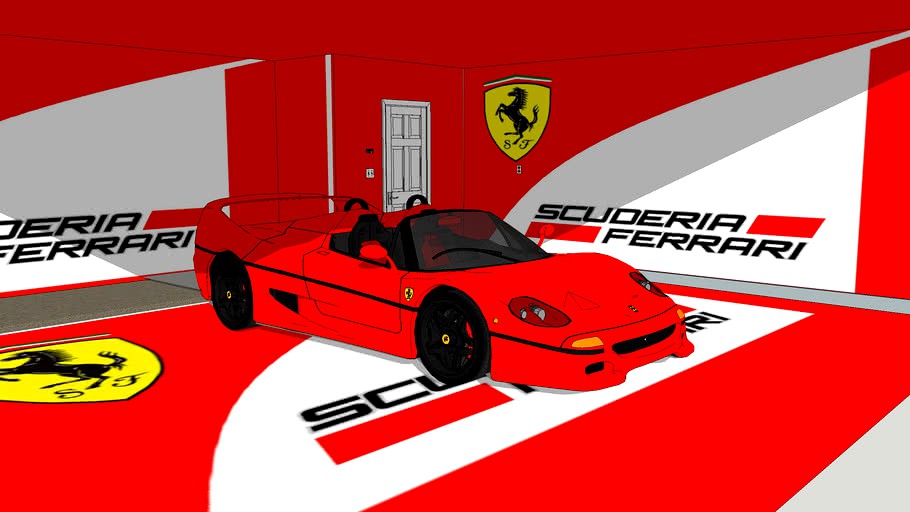
Ferrari F50
by 3DWarehouse
Last crawled date: 1 year, 9 months ago
The Ferrari F50 is a mid-engined range-topping sports car made by Ferrari. The F50 was introduced in 1995. The car is a two-door, two seat roadster with a removable hardtop. It has a 4.7 L naturally aspirated 60-valve V12 engine that was developed from the 3.5 L V12 used in the 1990 Ferrari 641 Formula One car. Only 349 cars were made. The last F50 was produced in Maranello, Italy, in July 1997. The F50's engine predated the car; it was used in the Ferrari 333 SP for the American IMSA series in 1994, allowing it to become eligible for the stock engine WSC category. Racing Following the motorsport theme, Ferrari developed the F50 GT, a prototype based on the F50 that was built to compete in GT1-class racing. The car had a fixed roof, large rear spoiler, new front spoiler and many other adjustments. The 4.7 litre V12 engine was tuned to generate around 750 bhp (559 kW). In testing in 1996 the car proved to be quicker even than the 333SP, but this went unnoticed as Ferrari cancelled the F50 GT project, instead focusing on Formula One. Ferrari sold off the three complete chassis that were built–the test car 001, 002 and 003. Chassis 002 and 003 had bodies fitted before being sold. The remaining three tubs were apparently destroyed. A custom-made F50 variant named the Bolide was commissioned by the Sultan of Brunei in 1998 and delivered in the same year.citation needed] It used the F1 derived V12 engine and the same chassis, but was completely redesigned due to the monocoque construction of the body on the F50.citation needed] One car was produced in the coupe configuration. Very few images and no official performance statistics of this car are available. At least one car was produced in RHD for the sultan, and was subsequently bought by a collector in Ireland. Specifications Ferrari F50 General Manufactured in: Maranello, Italy Number produced: 349 (1995 to July 1997) Inspiration: 1990 Ferrari 641 as driven by Alain Prost The Ferrari F50 at the Marconi Automotive Museum Dimensions Dry weight: 2712 lb (1230 kg) Distribution: 42%/58 % (front/rear) Length: 177 in (4,496 mm) Height: 44.1 in (1,120 mm) Width: 78.2 in (1,986 mm) Wheelbase: 101.6 in (2,581 mm) Front track: 63.8 in (1,621 mm) Rear track: 63.1 in (1,603 mm) Engine Type: Tipo 040-derived, model SFE 4.7 VJGAEA Position: mid-engine, rear-wheel drive Configuration: longitudinal 60-valve 65° V12, derived from F1 unit Aspiration: natural, with variable length intake manifold via butterfly valve in intake manifold Intake manifold: carbon fiber Block: nodular cast iron Heads/Pistons: might-alloy aluminum heads/forged Mahle pistons Oil sump: aluminium Connecting rods: forged titanium Crankshaft: forged steel Cam covers/Oil and water pump housing: magnesium sand castings Exhaust manifold: stainless steel Engine weight: 436.5 lb (198.0 kg) Timing gear: 5 valve/cyl (3 intake, 2 exhaust), 4 overhead camshafts (2 per cylinder bank) driven by low-noise Morse chain Displacement: 4698 cc/286.68 ci Max. power: 520 PS (382 kW; 513 hp) @ 8000 rpm Ferrari F50 engine Max. torque: 347 lb·ft (470 N·m) @ 6500 rpm Power/Disp.: 109.1 bhp/litre Weight/Power ratio: 5.8 lb/bhp Bore x Stroke: 3.35 in (85 mm). x 2.72 in (69 mm) Bore:Stroke ratio: 1.23:1 (oversquare) Compression ratio: 11.3:1 Redline: 8500 rpm Fuel cutoff: 8640 rpm ECU: Bosch Motronic 2.7 (controls the fuel feed, ignition timing, and variable length intake and exhaust systems) Fuel feed: Sequential injection Ignition: Bosch static electronic distributor-less ignition Lubrication: dry sump, tank incorporated within the final drive housing, 3 scavenger pumps Variable intake: butterfly valve in carbon fiber intake manifold closed at low rpm, open at high rpm Variable exhaust: butterfly valve in upper tailpipes closed at low rpm, open at high rpm Fuel tank: foam filled, aeronautical-style Sekur rubber bladder, 27.7 US gal (105 L; 23 imp gal) Fuel consumption EPA premium gasoline Combined 8 miles per U.S. gallon (29 L/100 km; 9.6 mpg-imp) City 7 miles per U.S. gallon (34 L/100 km; 8.4 mpg-imp) Highway 10 miles per U.S. gallon (24 L/100 km; 12 mpg-imp) Transmission Configuration: longitudinal 6 speed manual + reverse, limited slip differential, RWD Gear ratios: 2.933:1 (1st), 2.157:1 (2nd), 1.681:1 (3rd), 1.360:1 (4th), 1.107:1 (5th), 0.903:1 (6th), 2.529:1 (reverse) Final drive: 3.70:1 Flywheel: steel Final Drive Assembly: aluminum sand casting Remaining gearset housing: magnesium sand casting Support bracing: steel Clutch: dry, twin plate Cooling: oil-water intercooler between gearbox lubricant and engine Chassis Type: central carbon fiber tub, light-alloy suspension and engine-gearbox assembly mounting points co-polymerised to the chassis Materials: carbon fiber, epoxy resin, Nomex honeycomb core, sandwich construction Weight: 2,249 lb (1,020 kg) Torsional stiffness: 25,500 lb·ft (34,570 N·m) per degree Suspension Front: Rose-jointed unequal-length wishbones, push-rods, coil springs, Bilstein gas-pressurised monotube dampers, electronic adaptive damping, electronic height adjustment (40 mm max) Rear: Rose-jointed unequal-length wishbones, push-rods, coil springs, Bilstein gas-pressurised monotube dampers, electronic adaptive damping, mounting points on a spacer between the engine and gearbox Travel: 55 mm bump, 60 mm rebound Camber angle: -0.7 degrees front, -1.0 degrees rear Anti-roll bars: front and rear Max. roll angle: 1.5 degrees Steering Type: TRW rack and pinion, 3.3 turns lock to lock, unassisted Caster angle: 5.5 to 5.7 degrees Turning circle: 41 ft (12 m) Miscellaneous Electronic adaptive damping (based on steering wheel angle and velocity, the body’s vertical and longitudinal acceleration, brake line pressure, and vehicle speed) Maximum reaction time (from minimum to maximum damping force or vice versa): 140 milliseconds (0.14 sec) Average reaction time (from minimum to maximum damping force or vice versa): 25 to 30 milliseconds (.025 to .03 sec) Wheels/tires/brakesedit] Wheels: magnesium alloy, manufactured by Speedline Hubs: titanium Brake disc bells/suspension uprights/brake calipers: aluminum Upper and lower wishbones: black powder-coated steel Front wheels: x Front tires: 245/35ZR-18 Goodyear Eagle F1 GS Fiorano (35psi) Front brakes: Brembo cross-drilled & ventilated cast iron discs, 4 piston aluminum Brembo calipers, Pagid brake pads, (without ABS) Rear wheels: x Rear tires: 335/30ZR-18 Goodyear Eagle F1 GS Fiorano (30psi) Rear brakes: Brembo cross-drilled & ventilated cast iron discs, 4 piston aluminum Brembo calipers, Pagid brake pads, (without ABS) Unsprung mass: 99 lb/121 lb (front corners/rear corners) Colour popularity Rosso Corsa (Red): 302 Giallo Modena (Yellow): 31 Rosso Barchetta (Dark red): 8 Argento Nurburgring (Silver): 4 Nero Daytona (Black): 4 Performance 0–97 km/h (60 mph): 3.8 sec 0–160 km/h (100 mph): 8.5 sec 1/4 mile: 12.1 seconds @ 123 mph (198 km/h) Skidpad: 0.95g Top speed: 194 mph (312 km/h) (202 mph (325 km/h) claimed)
Similar models
3dwarehouse
free

Tuned Carrara
...: 1 11.3 : 1 manual tiptronic s performance top track speed 177 mph 174 mph 0-60 mph 5.0 sec 5.4 sec msrp $ 83,800.00 $ 87,220.00
cg_trader
$10

DTM CONCEPT CAR
...rpm
power: 1200 ps
0 – 360 km/h 22 sec
360 – 0 km/h 12 sec
braking distance: 26 m (100-0 km/h)
body: carbon fiber
weight: 1100 kg
cg_trader
$10

Super car Concept
...rpm
power: 1200 ps
0 – 360 km/h 22 sec
360 – 0 km/h 12 sec
braking distance: 28 m (100-0 km/h)
body: carbon fiber
weight: 1200 kg
3dwarehouse
free

24 hs of Le Mans Racing car
...e #le_mans #mans #profile #rims #seat #spoiler #super #supercar #suspension #taul_lights #tires #transmission #wheels #windshield
grabcad
free

Engine intake manifold
...fold is mounted on the cylinder head/block depending on its design. however, it sits between the two cylinder banks in v engines.
3dwarehouse
free

BMW 760IL RALLY CAR
...s bhp: 465 lbs/torque: 698 weight: 1350kg engine type: v12 normally aspirated #760il #7series #bmw #car #dubai #rally #suspension
3dwarehouse
free

Mercedes-Benz 770
...n) and a front track equal to the rear track of 1,500 mm (59.1 in) ( wikipedia ) #770 #benz #bubus #car_masina #mercedes #vehicle
grabcad
free

2014 Dodge Charger Concept
...p speed: 180 mph (290 km/h)
curb weight: 3500lb (1588 kg)
modeled in blender 2.68, rendered in cycles
*purely fictional vehicle
grabcad
free

Intake Manifold
...intake manifold
grabcad
intake manifold of an engine for fuel supply modelled in solidworks.
cg_trader
$5
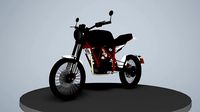
Motorcycle M1nsk scr 250
...els
front wheel (tires) r17
rear wheel (tires) r17
ground clearance (mm) 260
main characteristics
year of manufacture (year) 2019
F50
3ddd
$1

Ferrari F50
...ferrari f50
3ddd
машина
ferrari f50 по чертежам и фоткам
3d_export
$149

Ferrari F50 3D Model
...ferrari f50 3d model
3dexport
ferrari car auto transport f50
ferrari f50 3d model 3dcga 13 3dexport
3d_export
$39

Ferrari F50 3D Model
...rrari f50 1995 1996 1997 sport fast coupe dreamcar supercar italy italian car auto
ferrari f50 3d model eugeny.pol 92096 3dexport
3d_export
$129

Ferrari F50 3D Model
...sport fast coupe cabrio convertible roadster hardtop dreamcar supercar italy italian f1
ferrari f50 3d model squir 33510 3dexport
3d_export
$86

Ferrari F50 3D Model
...rior lamborghini diablo motor enzo f430 fxx f1 race porsche ferrari 360 456 612 spider
ferrari f50 3d model maxxar 23215 3dexport
3d_export
$12
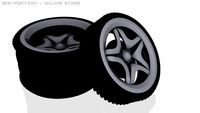
Ferrari F50 Rims 3D Model
...ferrari f50 rims 3d model
3dexport
rims cars ferrari red polygons
ferrari f50 rims 3d model alexxrr88 14163 3dexport
3ddd
$1

Gallery Bolero S50-f50-H65
...gallery bolero s50-f50-h65
3ddd
gallery
gallery bolero s50-f50-h65 bolero s 50 chandelier by gallery vetri d'arte
3d_export
$20

Ferrari F50 original wheel disk 3D Model
...el disk 3d model
3dexport
wheel auto ferrari f50 car part disk
ferrari f50 original wheel disk 3d model eugeny.pol 93553 3dexport
3d_export
$25

ferrari f50
...<br>suitable for post production<br>web site : sfdemir.com<br>sfdemir - sabri fırat demir @ all rights reserved
3ddd
$1
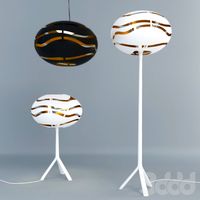
Серия светильников B.lux TREE SERIES HALOG Zweifarbig, T50, F50, S50 (потолочный и напольные)
...я: 55 см
цвет: белый, золотой, черный
материал: алюминий
лампы: 1 х e27 х 150 вт
включение ламп в поставку: нет
ip20
вес: 6 кг
Ferrari
3ddd
free

Ferrari
... milleno , sport , car
ferrari milleno
3ddd
$1
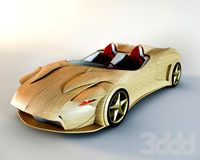
Ferrari
...ferrari
3ddd
ferrafi , автомобиль
ferrari
3ddd
$1
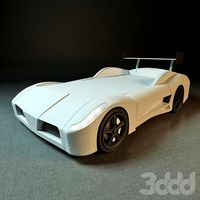
Кровать Ferrari
...кровать ferrari
3ddd
ferrari
детская кровать ferrari.
3ddd
$1

pen ferrari
...pen ferrari
3ddd
pen ferrari , ручка
pen ferrari
3ddd
$1
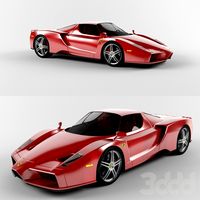
Ferrari Enzo
...ferrari enzo
3ddd
ferrari
высокополигональная модель ferrari enzo
3ddd
$1

Ferrari cup
...rrari , кружка , чашка
3d модель кружки ferrari
3ddd
$1

Ferrari wheel
...ferrari wheel
3ddd
ferrari , колесо
высокополигональная модель колеса от ferrari.
3d_ocean
$39

Ferrari F150
...ferrari f150
3docean
car f1 ferrari motor
f1 ferrari f150 with pilot.
3d_export
$20

ferrari f40
...ferrari f40
3dexport
ferrari f40
3d_export
$20

ferrari california
...ferrari california
3dexport
ferrari california
